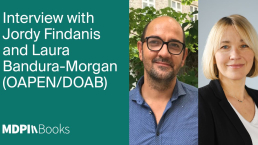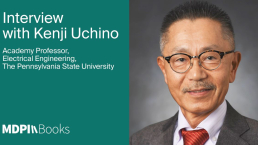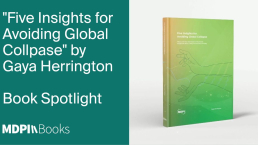
Interview with Prof. Dr. Manfred Max Bergman
As part of our ongoing Social Sciences, Arts and Humanities campaign, we sat down with Prof. Dr. Manfred Max Bergman to discuss challenges faced by SSAH, funding disparities, misinformation in today’s world, and how SSAH and open access might help us face the issues of our present moment.
What are some of the biggest challenges faced by researchers in Social Sciences, Arts and Humanities fields today?
The biggest challenges for the humanities, arts, and social sciences are basically structural, epistemic, and political. A shift in attention and funding toward STEM fields, for example, is influenced by all three. Governments and institutions dependent on government funding often prioritize STEM for their perceived economic and technological benefits, where especially short-term economic impact, presented as “innovation”, dominates short project cycles. Of course, this is an oversimplification, given that many countries and funding agencies continue to support many SSAH programmes, and that many sub-disciplines in the STEM fields are also underfunded and otherwise neglected.
There are of course ways in which SSAH also contribute to the current challenges, such as academic silos, disciplinary habits to ignore or devalue related disciplines, age-old procedural or methodological disagreements, theoretical antagonisms, politically or strategically charged debates about quality, value, excellence, relevance, etc. These two are linked, of course: The less attention, respect, and funding a research area receives over time, the more competition and conflict are introduced between institutions, disciplines, approaches, and researchers.
Another set of challenges comes from a change in public perceptions, which has two major consequences for SSAH: On the one hand, we see a growing suspicion of academia specifically and of expertise more generally, which connects to an increase in anti-intellectualism. SSAH often has to defend itself against the idea that the humanities, arts, and social sciences are, at best, luxuries that are either difficult to fund in challenging economic times or that their support should be left to market dynamics, instead of governments and taxpayers. This shift in public sentiment also connects obliquely to political pressure and censorship. Authoritarian regimes have always clamped down on SSAH elements through censorship, surveillance, and legal prosecutions. But there are many ways in which even democratic regimes today constrain research on sensitive topics and academic freedom.
Overall, it seems like the SSAH are at a crossroad and, as an optimist with some pessimistic tendencies, I believe that the political, economic, and technological revolutions we are experiencing are not only posing challenges, but they are also providing immense opportunities for SSAH, and that institutional support will eventually catch up.
How do you see funding disparities between STEM and SSAH playing out in your work, and what strategies have you found to navigate them?
For starters, I stay away from worrying about who gets how much for what. Over the years, I have seen how concerns about funding and funding inequities between and within disciplines can damage the productivity and well-being of institutions and individuals. However, I have to admit that this attitude may also lead to fewer academic opportunities and resources in the long run. There are numerous strategies that I employ to deal with underfunded and even unfunded research:
- Carefully tightening the research focus to make it doable and still interesting. This tends to reduce complexity and costs, specifically for data collection and analysis.
- Moving away from large-scale quantitative projects to small-scale theoretical and qualitative projects because of the relative autonomy, flexibility, and creativity that smaller projects allow.
- Working on large-scale projects strategically as a collaborator or consultant. These collaborations are usually very satisfying because I get to learn new things, work with dedicated and interesting people, and we get to co-create something that I would not have been able to do on my own.
- Getting involved with quantitative (even qualitative) secondary data analysis, which remains underappreciated as an excellent form of doing “no-funding” or “low-funding” research. It is indeed possible to have a thriving and productive research career by reanalysing—often more creatively than what has been done initially—pre-existing data.
In the end, copious funding and a generous timescale are, of course, a great opportunity for senior and early career researchers. But I am not so sure if being part of a multinational, interdisciplinary, multimethod, and multisite project always leads to good research and satisfactory careers.
Your research in “Fighting Fake Facts” looks at the issues of misinformation and disinformation. How can SSAH fields help equip us with the tools necessary to counter false information?
There has always been misinformation (fake news without harmful intent) and disinformation (fake news with harmful intent), although this has indeed increased in public discourse and academia; it has permeated just about all spheres of our lives.
However, I am divided on whether I ought to actively “fight” fake facts, especially in a time of strategic intentionality, where proving the fakeness of fake facts needs to counter intentional strategies in constructing the fakeness of actual facts. In some way, this back-and-forth is a strategic contest where winning argumentative points becomes more important than conducting good research. Could one way of dealing with fake facts not be to engage in quality research and suitable communication, instead of reducing scientific “facts” to whoever wins a (social) media-entrenched argument? Do I really want to debate a climate change denier about the effects of carbon in the atmosphere, populists on the contributions that foreigners make to our society, or Yale-trained lawyers about the dangers of vaccines?
One strategy that I have developed over time is to engage non-academic audiences more purposefully, not only about the products of my research but also about how to integrate non-academic voices into my research, and about high-quality research as an exceptional approach to answer specific questions.
How might SSAH and open access work together in the future to help us face the issues of our present moment?
Three concerns are the high and increasing processing charges for disciplines that are already suffering from budget constraints; quality concerns of the reviewing, editing, and publishing process; and the complex pool of open access publishers, where it may be difficult to differentiate predatory from serious open access publishers. While funding institutions, universities, and open access publishers have been working on these issues, they have not yet been resolved satisfactorily.
But there are other challenges for open access publishers in relation to the SSAH, although, here again, there are many sub-disciplines that have adjusted successfully to this development, as have classical publishers that have developed open access avenues.
The complex relations between SSAH and open access have historical roots and are institutionally anchored. On the one hand, the cultural attachment to books is strong, as are long-term relations between book authors, editors, and classic publishing houses. In many ways, there are not necessarily economic but cultural differences between the open access world and the established printed world, where the emotional, aesthetic, and haptic experience of carefully curated books should not be underestimated.
Readers, habitually and economically, are moving away from books and journals, but this may not necessarily move SSAH researchers to other output formats, in contrast to publishers.
Another contributor is the fact that countless institutions, departments, and research leaders maintain official or unofficial lists of what they consider good journals or publishing houses. Academic hiring and promotion practices, institutional funding, and reputation still connect to these, despite numerous international attempts to disentangle quantitative metrics from content quality. It is often the same institution that insists on promoting content quality instead of metrics that, in its meetings, reverts to metrics when discussing the quality of academic work.
Short-term fixes that aim at bridging the gap are in place: improve funding for open access publishing, invest in repositories and Diamond OA, support open access books, offer training and infrastructure development assistance, and recognize good quality open access outlets. Long-term fixes are more difficult to achieve, such as supporting and funding a wider range of SSAH output, as well as promoting cultural change around SSAH.
In the end, your question implies an either/or position between two kinds of outlets. However, there are different categories of open access that complicate this question, and, increasingly, there are concerns about the adequacy of assessing research output in terms of publications, regardless of format and outlet. This is especially relevant for the arts, some areas in the humanities, and even certain sub-fields in the social sciences, where a written record that summarizes the output of a specific academic activity is less relevant.
In our culturally charged world, and with uncertainty surrounding funding cuts to SSAH, what does the future of SSAH research look like to you?
Earlier, I described myself as an optimist with some pessimistic tendencies. But in this regard, I feel strongly about existing and emerging opportunities for social science research.
Starting with two pessimistic caveats, I am convinced that the necessary cultural change within the SSAH will be painful and destructive. My other main concern is the speed with which societies will (need to) rediscover SSAH, not only as important academic disciplines but as fundamental contributors to a multidimensional prosperity of societies and institutions. Given sufficient adaptability from within and support from without, the future of SSAH will be okay. To an extent, my optimism about the future of SSAH may not come from abandoning its core but from adaptation.
SSAH disciplines will develop what machines and algorithms cannot: they will interpret meaning, question power, foster empathy, and imagine, even actively contribute to, better futures for societies and their members.
In our era of global uncertainty, geopolitical and geoeconomic shifts, cultural fragmentation, and rapid technological change, SSAH will eventually return from the periphery to participate in the sense-making and shaping of a modern and, for better or worse, globalised world.
Once our tech-centred era, which makes economic and governance promises it cannot keep in the long run, subsides, SSAH, in close collaboration with STEM and non-academic actors, can again pursue loftier ambitions through curation, rediscovery, and indeed sociotechnical innovation.
Pillars of this new SSAH era will include an understanding of complexity and interdependence; challenging assumptions and resisting reductionism; preserving heritage and identity while bridging cultural divides; engaging in creative problem solving; participating in the design of human-centred technologies; promoting justice; empowering participation; instilling global responsibilities and global belonging; and daring to co-design desirable futures superior to the audacious visions of contemporary technologies.
Want to learn more about the importance of Social Sciences, Arts and Humanities? Read our article as part of our special campaign highlighting SSAH.
Author bio
Professor Manfred Max Bergman holds the Chair of Social Research and Methodology, is Director of the Social Transitions Research Group, and Affiliated Professor at the Institute of European Global Studies at the University of Basel. He is also a Member of the Executive Board of the Swiss Academic Society for Environmental Research and Ecology (saguf), Senior Advisor at the Centre for Responsible Business (CRB) in India, Member of the Uganda National Academy of Sciences, and Member of the Sustainable Development Solutions Network (SDSN).
His research focuses on the dynamics of socio-sustainable transitions. He investigates real-world, often unexpected, examples of successful sustainability transitions. These cases highlight how diverse actors—public, private, and civil—come together to forge cooperative solutions that yield socially, economically, and ecologically positive outcomes. His aim is not only to understand how transitions happen but also to offer actionable and replicable insights across different contexts. He collaborates on a number of research projects in Europe and Asia.
Note
The views, thoughts, and opinions expressed in this interview belong solely to the interviewee and do not necessarily reflect those of MDPI or MDPI Books. The content provided is for informational purposes only and should not be interpreted as an endorsement by MDPI.









